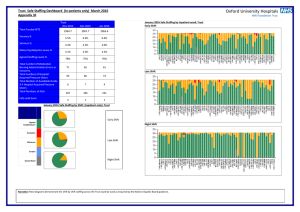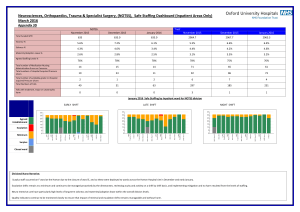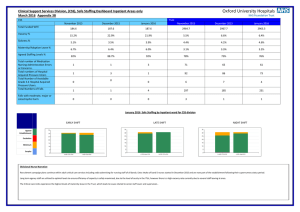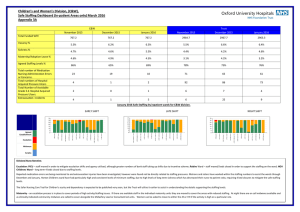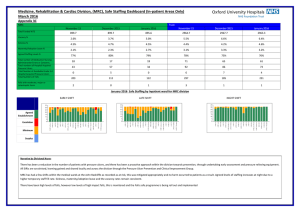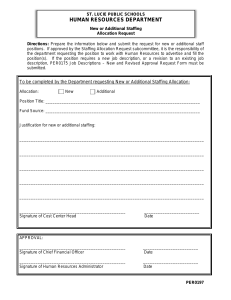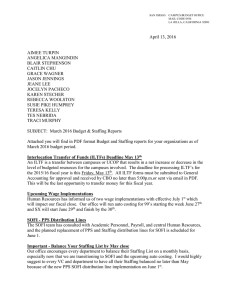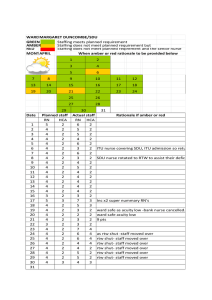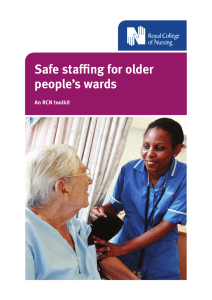Surgery & Oncology Division, (S&O), Safe Staffing Dashboard (In-patient Areas... March 2016
advertisement
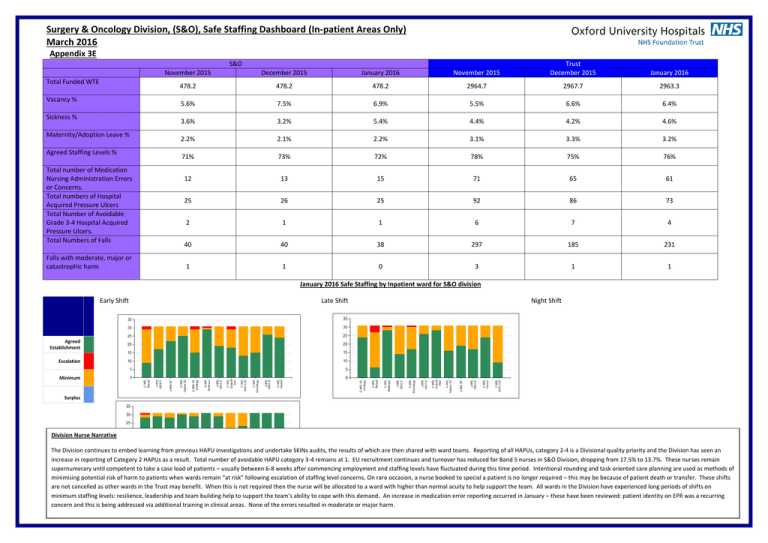
Surgery & Oncology Division, (S&O), Safe Staffing Dashboard (In-patient Areas Only) March 2016 Appendix 3E S&O Total Funded WTE Vacancy % Sickness % Maternity/Adoption Leave % Agreed Staffing Levels % Total number of Medication Nursing Administration Errors or Concerns. Total numbers of Hospital Acquired Pressure Ulcers Total Number of Avoidable Grade 3-4 Hospital Acquired Pressure Ulcers. Total Numbers of Falls Falls with moderate, major or catastrophic harm November 2015 December 2015 January 2016 November 2015 Trust December 2015 478.2 478.2 478.2 2964.7 2967.7 2963.3 5.6% 7.5% 6.9% 5.5% 6.6% 6.4% 3.6% 3.2% 5.4% 4.4% 4.2% 4.6% 2.2% 2.1% 2.2% 3.1% 3.3% 3.2% 71% 73% 72% 78% 75% 76% 12 13 15 71 65 61 25 26 25 92 86 73 2 1 1 6 7 4 40 40 38 297 185 231 1 1 0 3 1 1 January 2016 January 2016 Safe Staffing by Inpatient ward for S&O division Early Shift Late Shift Night Shift Agreed Establishment Escalation Minimum Surplus Division Nurse Narrative The Division continues to embed learning from previous HAPU investigations and undertake SKINs audits, the results of which are then shared with ward teams. Reporting of all HAPUs, category 2-4 is a Divisional quality priority and the Division has seen an increase in reporting of Category 2 HAPUs as a result. Total number of avoidable HAPU category 3-4 remains at 1. EU recruitment continues and turnover has reduced for Band 5 nurses in S&O Division, dropping from 17.5% to 13.7%. These nurses remain supernumerary until competent to take a case load of patients – usually between 6-8 weeks after commencing employment and staffing levels have fluctuated during this time period. Intentional rounding and task oriented care planning are used as methods of minimising potential risk of harm to patients when wards remain “at risk” following escalation of staffing level concerns. On rare occasion, a nurse booked to special a patient is no longer required – this may be because of patient death or transfer. These shifts are not cancelled as other wards in the Trust may benefit. When this is not required then the nurse will be allocated to a ward with higher than normal acuity to help support the team. All wards in the Division have experienced long periods of shifts on minimum staffing levels: resilience, leadership and team building help to support the team’s ability to cope with this demand. An increase in medication error reporting occurred in January – these have been reviewed: patient identity on EPR was a recurring concern and this is being addressed via additional training in clinical areas. None of the errors resulted in moderate or major harm.
